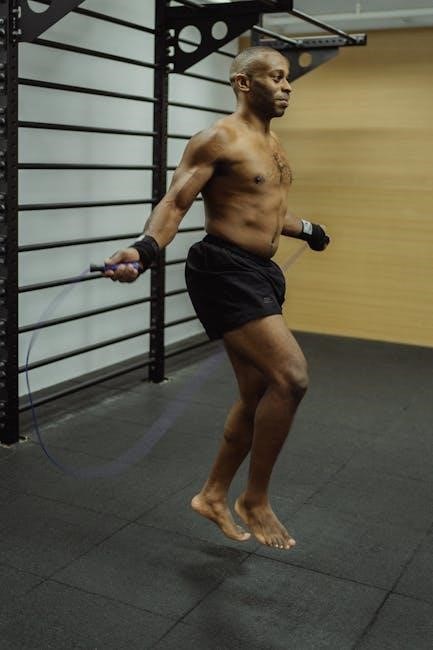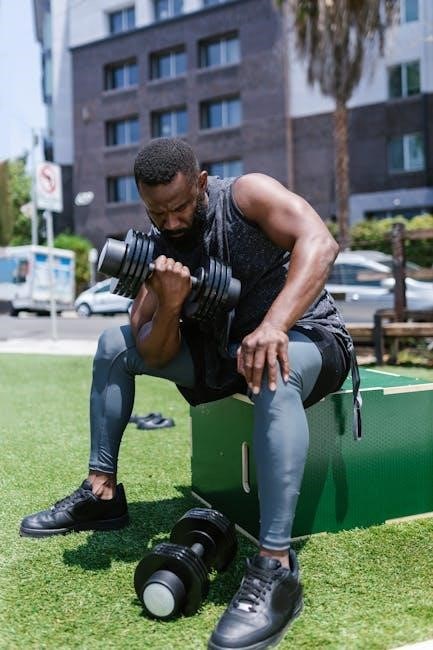LiftMaster 878MAX Manual: A Comprehensive Guide
Navigating the world of garage door openers can be complex, but the LiftMaster 878MAX manual serves as your essential guide. This comprehensive resource offers clear instructions, troubleshooting tips, and detailed explanations of its features. Unlock the full potential of your keyless entry system!
Overview of the LiftMaster 878MAX
The LiftMaster 878MAX wireless keypad is a keyless entry system designed for convenient access to your garage. Serving as a replacement for the 877MAX, it simplifies the installation process with fewer steps. This keypad is compatible with LiftMaster, Chamberlain, and Craftsman garage door openers manufactured after January 1, 1993.
It supports Security+ 2.0 garage door openers with a yellow learn button and is backwards compatible with older models using purple, red, orange, or green learn buttons. The 878MAX allows users to open or close their garage door without a remote control or key, using a private 4-digit code that you can program directly into the unit.
The device can control up to three different garage door openers. The 878MAX includes a 9V battery and a programming manual to guide users through the setup process. It features an amber-colored LED for visibility. This keypad provides a secure and reliable keyless entry solution for your garage.
It offers a user-friendly experience with its streamlined setup and broad compatibility, ensuring easy integration with various garage door opener systems. The LiftMaster 878MAX is a versatile and secure way to enhance your garage access.
Key Features and Benefits of the 878MAX
The LiftMaster 878MAX wireless keypad offers several key features and benefits that make it a standout choice for garage access. Its primary advantage is keyless entry, eliminating the need for keys or remote controls. Users can easily program a 4-digit code for secure and convenient access.
The simplified setup process, with fewer steps compared to previous models like the 877MAX, ensures a hassle-free installation. The 878MAX is backwards compatible, working seamlessly with various LiftMaster, Chamberlain, and Craftsman garage door openers manufactured since 1993. It supports Security+ 2.0 and older systems.
This keypad can control up to three different garage door openers, providing versatility for households with multiple doors. The amber-colored LED enhances visibility in low-light conditions, making it easy to use at night. The inclusion of a 9V battery and programming manual ensures users have everything needed.
Enhanced security features protect against unauthorized access. The LiftMaster 878MAX offers a reliable and user-friendly experience, combining convenience with peace of mind. Its robust design and broad compatibility make it an ideal solution for upgrading your garage access system, providing ease and security.
Compatibility with Garage Door Openers
The LiftMaster 878MAX wireless keypad boasts broad compatibility with a range of garage door openers, making it a versatile choice for many homes. Notably, it works seamlessly with LiftMaster, Chamberlain, and Craftsman models manufactured after January 1, 1993. This includes those utilizing Security+ 2.0 technology.
Specifically, the 878MAX is compatible with openers that have PURPLE, RED, ORANGE, GREEN, and YELLOW learn buttons. This covers a wide spectrum of garage door opener systems. Additionally, it supports Chamberlain MyQ openers, expanding its compatibility to modern, internet-connected devices.
For older systems, the 878MAX offers backwards compatibility, replacing older keypads like the 66LM, 976LM, 977LM, 377LM, and even the 877MAX. This ensures that users with older garage door openers can still benefit from the enhanced security and convenience.
When unsure about compatibility, consulting the learn button color on your garage door opener is crucial. Contacting customer support can also provide clarity. The LiftMaster 878MAX’s extensive compatibility ensures a seamless integration, providing keyless entry to a vast array of garage door systems, both old and new, thereby enhancing user convenience.
Programming the 878MAX: Method A (Yellow Learn Button)
Method A is designed for LiftMaster garage door openers equipped with a yellow learn button. This programming method is straightforward and efficient. First, locate the yellow learn button on your garage door opener motor.
Press and release the yellow learn button. A yellow LED indicator light will illuminate, signaling readiness for programming. Within 30 seconds, enter your desired four-digit PIN on the 878MAX keypad. After entering your PIN, press the ENTER button. The garage door opener should now activate, confirming successful programming.
If the garage door does not activate, repeat the process. Ensure that the PIN is entered accurately and within the 30-second timeframe. Verify the battery is functional.
This method is pre-programmed to work with LiftMaster openers that have the yellow learn button. The simplified setup of the 878MAX, with its amber colored LED and streamlined process, ensures a quick and easy installation. This user-friendly approach to programming makes securing your garage accessible.
Consult the LiftMaster 878MAX user guide for visual aids and further assistance, making the setup process even smoother and more intuitive.
Programming the 878MAX: Method B (Other Colored Learn Buttons)
Method B is used for LiftMaster garage door openers with learn buttons of other colors, such as purple, red, orange, or green. The programming process differs slightly from Method A, which is designed for yellow learn buttons. Begin by locating the learn button on your garage door opener motor. Note the color of the button.
Press and release the learn button. An LED indicator light near the button will illuminate, signaling the opener is ready to learn. Within 30 seconds, enter your desired four-digit PIN on the 878MAX keypad. After entering the PIN, press the ENTER button.
Next, press the learn button on the garage door opener again. The garage door opener should now activate, confirming successful programming. If the door does not activate, repeat the process, ensuring that the PIN is entered correctly and within the given timeframe.
Some older models may require additional steps, so consult the LiftMaster 878MAX user guide for specific instructions. Method B ensures compatibility with a wide range of LiftMaster, Chamberlain, and Sears Craftsman openers, even those manufactured before the Security+ 2.0 standard.
For Chamberlain MyQ openers, follow the specific instructions provided in the manual. This adaptability makes the 878MAX a versatile keyless entry solution.
Step-by-Step Installation Guide
Installing the LiftMaster 878MAX is a straightforward process, ensuring a seamless keyless entry experience. Begin by gathering the necessary tools: a Phillips head screwdriver, a drill (optional), and the provided mounting hardware. First, decide on the keypad’s location, typically near the garage door, ensuring easy access.
Clean the mounting surface and position the keypad bracket. Use the provided screws to secure the bracket to the wall. For added security, you can pre-drill pilot holes before installing the screws. Once the bracket is firmly in place, slide the 878MAX keypad onto the bracket.
Next, insert the 9V battery into the keypad, following the polarity markings. With the battery installed, proceed to program the keypad using either Method A or Method B, depending on the color of your garage door opener’s learn button. Refer to the programming section of this manual for detailed instructions.
After programming, test the keypad by entering your PIN and pressing the ENTER button. The garage door should activate. If it doesn’t, double-check the programming steps. Finally, secure the keypad cover. Your LiftMaster 878MAX is now installed and ready to provide secure, keyless access to your garage.
Ensure the keypad is within range of the garage door opener for optimal performance.

Troubleshooting Common Issues
Even with a well-designed system like the LiftMaster 878MAX, occasional issues can arise. One common problem is the keypad not responding. First, ensure the battery is fresh and properly installed, paying attention to the correct polarity. Replace the battery if necessary, as a weak battery is a frequent culprit.
If the keypad still doesn’t respond, check the programming. It’s possible the keypad lost its connection to the garage door opener. Reprogram the device following either Method A or Method B, depending on your opener’s learn button color. Ensure you are within range of the garage door opener during the programming process.
Another issue is an intermittent signal. This can be due to interference from other electronic devices. Try relocating the keypad slightly or repositioning the garage door opener’s antenna. Obstructions between the keypad and the opener can also weaken the signal.

If the garage door opens unexpectedly, immediately change your PIN to prevent unauthorized access. Examine the keypad for stuck buttons that might be sending unintended signals. For persistent problems, consult a qualified technician or contact LiftMaster support for further assistance. Always prioritize safety.
Remember to always consult the manual for specific error codes or diagnostic procedures.
Replacing the Battery
The LiftMaster 878MAX wireless keypad relies on a 9V battery to function, and replacing it is a straightforward process. When the keypad becomes unresponsive or the display dims, it’s usually a sign that the battery is low and needs replacement.

First, locate the battery compartment on the keypad. Typically, it’s found on the back or bottom of the unit. Use a small screwdriver or your fingernail to gently open the compartment cover. Remove the old 9V battery, noting its orientation (positive and negative terminals).
Insert a new 9V alkaline battery, ensuring that the terminals align correctly with the markings inside the compartment. A proper connection is crucial for the keypad to operate. Once the battery is in place, carefully close the compartment cover until it snaps securely shut.
After replacing the battery, test the keypad by entering your PIN and attempting to open or close the garage door. If the keypad still doesn’t work, double-check the battery orientation and ensure the battery is fresh. In rare cases, a faulty keypad might require professional repair or replacement.
Always dispose of old batteries responsibly, following local regulations for electronic waste disposal. Consider using rechargeable 9V batteries for a more environmentally friendly option.
Security Features and Considerations
The LiftMaster 878MAX keyless entry system prioritizes your security with several built-in features. Its primary security measure is the programmable 4-digit PIN code, which allows access to your garage without a physical key or remote. Regularly changing this code is crucial to prevent unauthorized entry, especially if you suspect it has been compromised.
Consider the placement of your keypad. Installing it in a visible location may deter potential intruders; However, ensure it’s not easily accessible to passersby who might attempt to tamper with it.
The 878MAX also offers temporary PIN capabilities, ideal for granting access to service personnel or visitors without sharing your primary code. Remember to delete these temporary codes once they are no longer needed.
While the 878MAX provides a convenient keyless entry, it’s essential to remain vigilant about overall garage security. Ensure your garage door is well-maintained, with a secure locking mechanism. Regularly inspect the door and its components for any signs of damage or wear.
Be mindful of who has access to your garage and educate family members about security best practices. By combining the 878MAX’s features with responsible security habits, you can significantly enhance the safety and security of your home.
Comparison with Previous Models (e.g., 877MAX)
The LiftMaster 878MAX builds upon the legacy of previous models like the 877MAX, offering several enhancements and improvements. One of the most notable differences is the simplified installation process. The 878MAX streamlines the setup, reducing unnecessary button prompts and steps compared to the 877MAX. This makes it easier for users to program and begin using the keypad.
While maintaining backwards compatibility with Security+ 2.0 garage door openers (yellow learn button), the 878MAX aims to provide a more user-friendly experience. It retains the core functionality of the 877MAX, such as the ability to control multiple garage door openers, but with a focus on ease of use.
Another visual difference lies in the amber-colored LED indicator on the 878MAX, replacing the orange LED found on the 877MAX. This subtle change enhances visibility and provides clear feedback during programming and operation.
In terms of overall reliability and security, the 878MAX continues to uphold the standards set by its predecessors. It offers the same level of keyless entry convenience and protection, with the added benefit of a more intuitive setup process. Users familiar with the 877MAX will find the 878MAX to be a seamless upgrade, while new users will appreciate its simplified design and ease of use.
Maintenance and Care Tips
To ensure the longevity and optimal performance of your LiftMaster 878MAX wireless keypad, regular maintenance and care are essential. Start by periodically cleaning the keypad surface with a soft, damp cloth to remove any dirt, dust, or debris. Avoid using harsh chemicals or abrasive cleaners, as these can damage the keypad’s finish and internal components.
Protect the keypad from extreme weather conditions, such as direct sunlight, rain, and snow. Prolonged exposure to these elements can cause the keypad to malfunction or deteriorate over time. Consider installing a protective cover or shield to shield the keypad from the elements.
Regularly inspect the battery compartment for any signs of corrosion or damage. If you notice any issues, replace the batteries immediately. When replacing the batteries, use high-quality alkaline batteries to ensure optimal performance and longevity.
Periodically test the keypad’s functionality to ensure that it is working properly. Check the keypad’s response time, the accuracy of the code entry, and the overall performance of the device. If you encounter any issues, consult the troubleshooting section of the user manual or contact LiftMaster customer support for assistance. By following these simple maintenance and care tips, you can extend the lifespan of your LiftMaster 878MAX wireless keypad and enjoy its reliable performance for years to come.

Where to Find the LiftMaster 878MAX User Guide
Locating the LiftMaster 878MAX user guide is crucial for understanding its features, programming procedures, and troubleshooting steps. Fortunately, the user guide is readily available through several convenient channels.
The primary source for the user guide is the LiftMaster website. Navigate to the “Support” or “Downloads” section of the website and search for the 878MAX model. You should find a downloadable PDF version of the user guide in multiple languages, including English, French, and Spanish.
Another option is to check the packaging that came with your LiftMaster 878MAX keypad. The user guide is often included as a printed booklet inside the box. If you have misplaced the physical copy, don’t worry; the digital version is easily accessible online.
Retailers that sell LiftMaster products, such as home improvement stores and online marketplaces, may also provide links to the user guide on their product pages. Look for a “Downloads” or “Resources” section on the product page to find the user guide.
Finally, you can try searching online using keywords such as “LiftMaster 878MAX user guide” or “LiftMaster 878MAX manual.” This should lead you to various websites and forums where the user guide is available for download or viewing.
LiftMaster 878MAX: Advantages of Keyless Entry
The LiftMaster 878MAX wireless keypad offers a multitude of advantages over traditional garage door access methods. Keyless entry eliminates the need for keys or remote controls, providing a convenient and secure way to enter your garage.
One of the primary benefits is convenience. No more fumbling for keys in the dark or worrying about lost or stolen remotes. Simply enter your personalized four-digit code to open the garage door.
Security is another significant advantage. Keyless entry systems are more difficult to compromise than traditional keys or remotes. The LiftMaster 878MAX uses rolling code technology, which changes the access code each time the keypad is used, preventing unauthorized access.
Keyless entry is also ideal for families with children or individuals who frequently forget their keys. Granting access to trusted individuals is easy by simply sharing the access code. You can also easily change the code if necessary, further enhancing security.
The LiftMaster 878MAX is particularly useful for active individuals who don’t want to carry keys or remotes while jogging, cycling, or engaging in other outdoor activities. Simply enter your code upon returning home.
Ultimately, the LiftMaster 878MAX offers a seamless blend of convenience, security, and flexibility, making it an excellent choice for homeowners seeking a modern and reliable garage door access solution.





